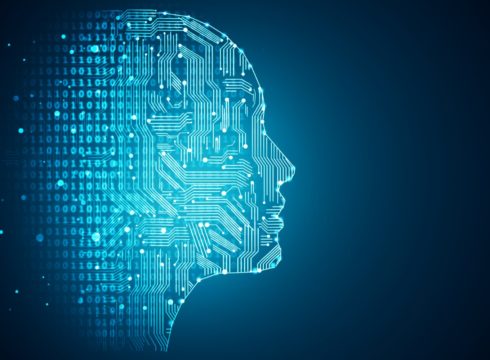SUMMARY
During the 19th century, the world witnessed a shift towards mechanized industrial processes
The rise of digital technologies is introducing new productivity to the system through automation
Soon AI will be driving us towards evolved productivity and decreased inefficiencies
Inc42 Daily Brief
Stay Ahead With Daily News & Analysis on India’s Tech & Startup Economy
Can humanization of AI be a boon or a bane for us? Again, it is a matter of perspective.
Technology is both a boon and a bane. What it actually depends on the perspective of how you see it. How far is the sight? How comprehensive is it? Let us bring better clarity over here.
During the 19th century, the world witnessed a shift towards mechanized industrial processes following a number of advances in science including chemistry, iron production, use of water and steam power, and so on. This shift was from the hand-based processes and paved the way for what we now know as the ‘Industrial Revolution’. Or, rather, the ‘First Industrial Revolution’.
This surely didn’t come without resistance. People believed that since now a majority of the work will be done by the machines, it will make them jobless. Now, as you see, it was just a matter of perspective. The industrial revolution was a boon for the global market and generated far-better and more evolved job opportunities for the people. It also acted as a catalyst to global economic growth.
Nowadays, we are being familiarised with a new shift in science and technology. Artificial Intelligence (AI) has become the buzzword across virtually all industries. But as is the case with any kind of revolution, this isn’t coming without resistance.
The ‘Art’ Of AI: Adding Contrast To The Canvas
To begin with, AI is an emerging stream that is enabling us to automate a range of processes and bring greater precision to them. According to Statista, the global AI software market was valued at $9.51 Bn in 2018, a figure that will become $118.6 Bn by 2025. This is around 12.5x (or 1,250 percent) growth in a span of 7 years or 43.4% CAGR (Compound Annual Growth Rate).
To put things in perspective, this annual growth rate is more than 6 times that of our national GDP despite India being one of the fastest-growing economies across the globe. This is simply because of the value that AI technology brings to the table. Now, let us add another dimension to our analysis.
For it, our perspective needs to be a bit comprehensive. Every trend is a part of a larger trend. The technological boom that we are experiencing today wouldn’t have happened without the industrial revolution, which wouldn’t be possible without contemporary scientific advances.
If you track all such developments, it will take us back to the discovery of wheel and that of fire – always empowering us successively to become better than we were before. Now, none of it would have been possible if we were not able to communicate these ideas. Communication – or effective communication – is the prime reason why we have been able to convey ideas and share information amongst ourselves. This has greatly amplified our collective knowledge and enabled us to enhance it constantly.
So, with the rise of digital technologies, it is beyond doubt that our society is at a crucial juncture from where all conventional processes will be managed via digital solutions, by and large. Since this is just the beginning of our ultramodern future as a society and as a market, our primary focus area should be communication, or business communication to be more precise.
Corporate communications in a business involve a number of challenges wherein every communication should be coherent with both individual conversations with a customer (at different customer touchpoints) and with the core ideology of the brand. Adding a personal touch to the conversation (by gauging a person’s individual preferences, inherent proclivities, historic transactions, market trends, geographical location, etc.) simply adds another layer to effective corporate communication.
Now, since conventional approach is not much viable (given human errors and omissions due to factors such as bias, neglect, fatigue, etc.), the rise of digital technologies and with it, that of AI technology (including deep learning and Natural Language Processing) is introducing new productivity to the system through automation of business communications. For instance, businesses of all shapes and sizes are now adopting Conversational AI assistants to drive their conversations on social media platforms and their proprietary websites.
Despite best attempts, conventional marketing techniques generate a CTA (Call to Action) of 15%. Conversational AI solutions are able to increase this figure to 50%. This is despite the solution being embryonic with conversations far from being humanized. Imagine the productivity that such solutions will unleash when they become completely matured and cater to more use cases.
Believe it or not, we are at a crucial juncture as a society and soon AI technology will be driving us towards evolved productivity, evolved skills, increased synchronisation, and decreased (or, rather, eliminated) inefficiencies. In other words, our ultramodern future – and the development of conversational AI is going to play a pivotal role in it.
The article is on behalf of Kartik Walia, Head of Operations (India) at Amplify.
Note: We at Inc42 take our ethics very seriously. More information about it can be found here.


